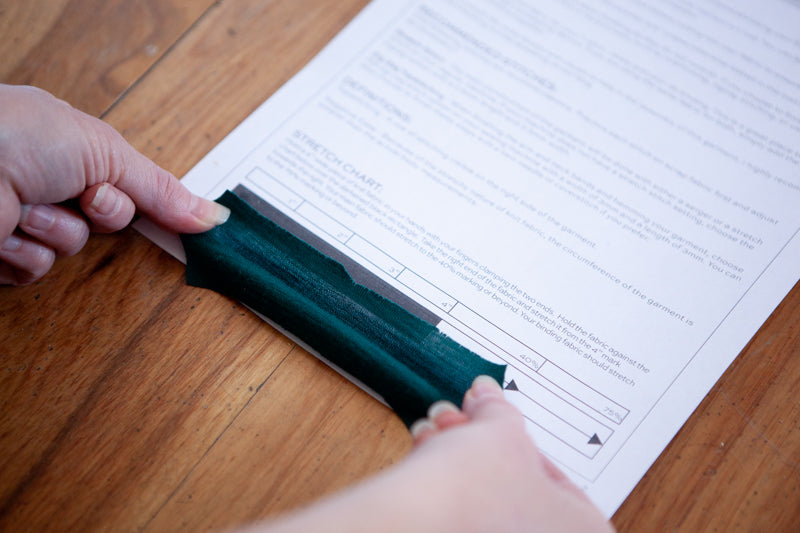
The official sewalong starts next week, but I wanted to pop on here and talk about fabric and notions you may need or want for the Rio if you are going to be sewing along with me.
NOTIONS
NEEDLES
Let's talk notions first. You will definitely want a special sewing machine needle to handle the knit fabric so you don't damage it. Look for a needle that has stretch or jersey in the description. When sewing the bindings and hems you have a choice of how to finish them. I prefer a good old zigzag stitch which is the preferred method in the Rio instructions. If you go this route you will only need the one stretch needle for all of the construction. I will also go over the option to use a twin sewing machine needle for some steps. If you prefer this method you will want to buy a twin stretch needle.

THREAD
You will need some all purpose thread for your Rio as well. If you are doing contrast binding as I am, you will need thread that matches both your main fabric and your binding fabric.

SOFTSTRETCH
This gem is not in the instructions and is completely optional, but it is one of my favorite notions. I use it whenever I sew a stretch knit. I will talk more about it in the sewalong, but in a nutshell it stabilizes knit seams so they do not stretch out during sewing while also acting as a bonding agent instead of pins. It is a lifesaver when it comes to the bindings and hem seams. It comes in lite and ultra. I use them both depending on the thickness of my fabric.

FABRIC
MAIN FABRIC
Now let's talk fabric. The main body of the t-shirt or dress should be made with a knit fabric which at least 40% widthwise stretch. More stretch than this doesn't make much of a difference except a slightly more giving fit. Using a fabric with less stretch than this may result in a garment that is too tight, especially in the sleeves and chest. If the fabric is slightly less you can probably get away with going up a size, but be careful. You can test the stretch percentage by using the chart in your instructions.
Simply cut a 4 inch piece of your fabric. Hold it against the stretch chart and pull the right end towards the arrows to determine what the stretch percentage is.




As for types of fabric, look for cotton jersey, t-shirt knits, cotton interlock, merino wool jersey, and even rib knit. Here are a few I found around the web that you may like:

1 | 2 | 3 | 4 | 5 | 6 | 7 | 8 | 9
BINDING FABRIC
For the neck and sleeve bindings you will want knit fabric with at least 75% stretch. If your fabric has less stretch than this you will have a hard time getting it over your head and may find the sleeves too tight at the hem. If the fabric has just a bit less stretch you may get away with lengthening the bindings slightly, but be careful.
As for types of fabric, I mostly recommend rib knit fabric. I prefer cotton ribbing because it presses well. If you buy a ribbing that has a lot of polyester in it you may find that it has a really hard time keeping it's press and give you a headache. I would also try to avoid knits that roll a lot. This will also cause you all sorts of frustration when you are trying to create those crisp even bindings. Here are a few you may like:

1 | 2 | 3 | 4 | 5 | 6 | 7 | 8 | 9
Let me know if you have any questions about fabric and notions. I can't wait to get started on Monday with the Rio sewalong.

